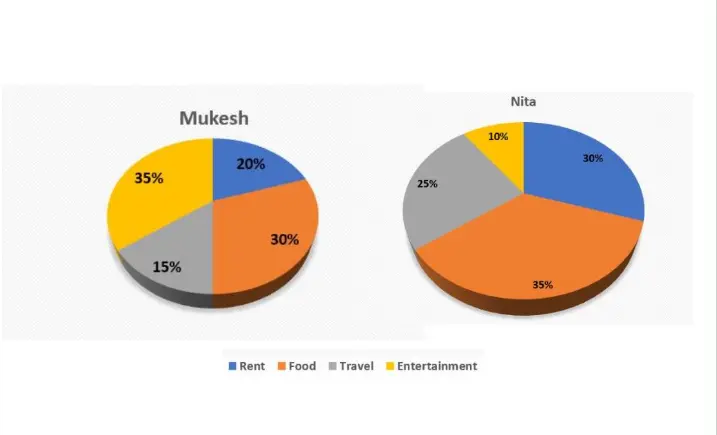PREPINSTA PRIME
Pie Chart Questions and Answers
Pie Charts Questions and Answers
Go through the entire page to know about Pie charts and also practice Pie Chart Questions and Answers at the end.
Definition:
A pie chart is a type of graphical representation that is used to display data in a circular form, resembling a sliced pie. It is often used to show how different parts or categories contribute to a whole.

What is a Pie Chart ?
A pie chart is a circularly shaped geometrical visual graphic that exhibits data, information, figures, and statistics in the format of an easy-to-read ‘pie slice’ with fluctuating sizes describing how much one data component exists. The larger the part, the more of that precise data were grouped.
How to solve Pie Chart Questions and Answers
- Start with what you want to illustrate: The main topic will be the title of your chart.
- Gather the data: Pie charts depict percentages. Make sure your percentages add up to 100% and get rid of any rounding issues that would make the total something other than 100%. SmartDraw allows you to write the percentage directly into a pie chart template or you can drag the edge of a wedge to make it bigger or smaller.
- Consider creating a legend: If a wedge is too small to hold text, you can create a label and draw a line identifying the appropriate slice. Alternatively, you can create a key that shows what each color represents.
Some Important Points about Pie Chart:
- Pie charts are easy to understand and require minimal effort to interpret.
- Pie charts are ideal for displaying data that represents parts of a whole, such as budget allocations, market share, or the composition of a population.
- They are visually appealing and can make your data presentation more engaging and memorable.
Below is a Sample image to understand what Pie chart is
The below image shows the expenditure of Mukesh and Nita in terms of a Pie chart.

Prime Course Trailer
Related Banners
Get PrepInsta Prime & get Access to all 200+ courses offered by PrepInsta in One Subscription
Also Check Out
Pie charts Questions and Answers

×
Please login to report
Also Check Out
Get over 200+ course One Subscription
Courses like AI/ML, Cloud Computing, Ethical Hacking, C, C++, Java, Python, DSA (All Languages), Competitive Coding (All Languages), TCS, Infosys, Wipro, Amazon, DBMS, SQL and others

Series
- Line Charts – Questions Formulas | How to Solve Quickly | Tricks & Shortcuts
- Pie Charts – Questions | Formulas | How to Solve Quickly | Tricks & Shortcuts
- Bar Charts – Questions | Formulas | How to Solve Quickly | Tricks & Shortcuts
- Radar Charts – Questions | Formulas | How to Solve Quickly | Tricks & Shortcuts

Series
- Line Charts –
Questions
Formulas |
How to Solve Quickly |
Tricks & Shortcuts - Bar Charts –
Questions |
Formulas |
How to Solve Quickly |
Tricks & Shortcuts - Radar Charts –
Questions |
Formulas |
How to Solve Quickly |
Tricks & Shortcuts

 Apply For Jobs
Apply For Jobs Get Hiring Updates
Get Hiring Updates



